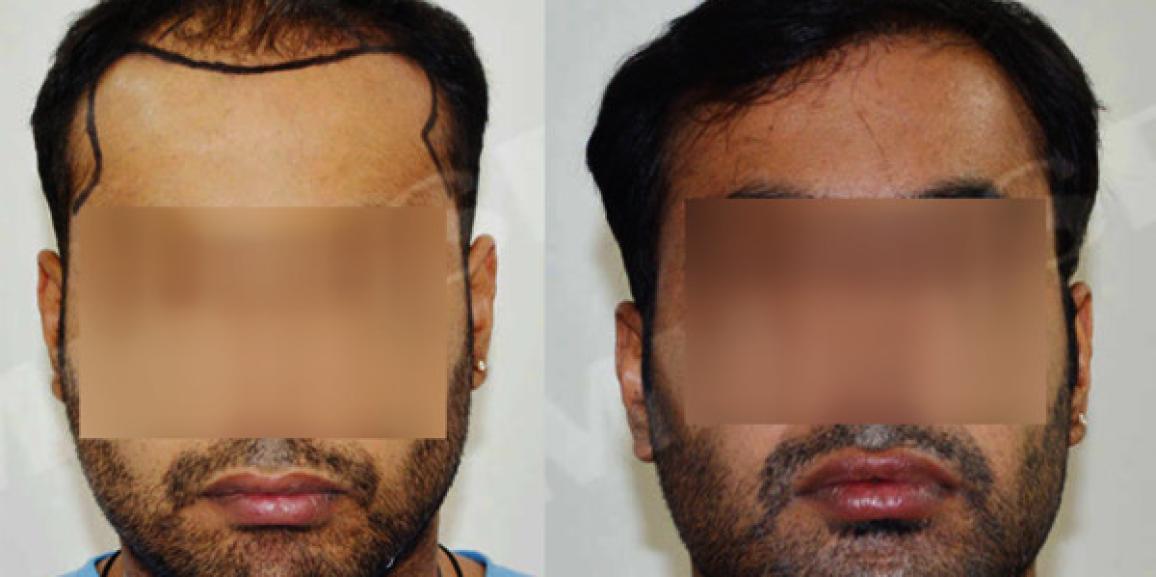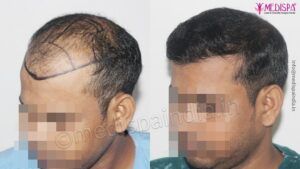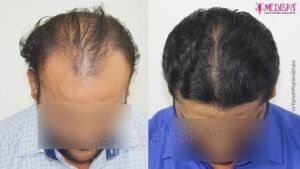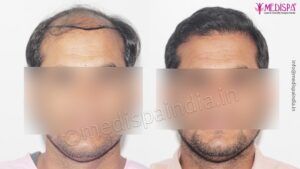
Patients who have bald spots on their scalps as well as in facial areas like the beard, moustache, and eyebrows undergo hair restoration surgery. The goal of this minimally invasive surgery is to transplant hair follicular grafts that have been hand-selected from permanent hair root bearing regions. Particularly the sides and back of the head, as well as body hairs elsewhere than the scalp, are locations where permanent hair roots can grow.
In addition to the city’s popular tourist destinations that draw visitors from across the world, Jaipur also attracts attention for its hair transplant industry. People now travel to Jaipur for two reasons: to take in the city’s beauty and to receive the best hair transplant in Jaipur. Few top-notch hair transplant surgeons who have been in practise for more than a decade live in the city.
Since more than a decade, Medispa Hair Transplant Clinic has been a leader in the industry. Because of our brilliance in this sector and the hundreds of success stories that we have, we are personally chosen by celebrities, domestic patients, and patients from other countries. We are well-known and respected across the world for our outstanding outcomes and high-quality services provided at an affordable hair transplant cost in Jaipur. Nearly all of our patients commend our helpful staff for their high level of dedication, expertise, and enthusiasm for what they do. They also thank them for their kind deeds, which give a touch of comfort to their job of excellence.
What are Hair grafts?
The hair follicles that are removed from the donor region and transplanted to the intended bald area are referred to as hair grafts. The numbered hair transplants, which are not always solitary and are extracted all at once, range from one to four. The permanent hair grafts used for the hair transplant surgery must be harvested using specialist equipment.
Permanent hair transplants are those that are resistant to DHT and lack androgenic hormone receptors, therefore they are unaffected by these hormones. The DHT resistant hair transplant does not change when androgenic hormone is present, and because it does not experience hair shrinking or thinning, it remains intact for life.
The back and sides of the head are the most typical locations for hair graft harvesting during hair transplants, while other body areas than the scalp may also be used. During the initial consultation, the hair transplant surgeon carefully examines these places to see whether the surgery is feasible. This is an important step in determining whether you are a good candidate for hair transplantation or not.
How many grafts are needed?
Your hair transplant surgeon will determine the necessary amount of grafts based on a variety of criteria, including:
- The degree of baldness: Norwood’s categorization only considers the degree of baldness when determining the quantity of grafts needed to cover the bald region. Advanced cases of Norwood VI and VII baldness require the most number of hair grafts.
- Availability of hair density in the donor region: The amount of follicular grafts that may be harvested from the donor site depends on the hair density of the donor area. The quantity of grafts to be harvested should be carefully considered in order to prevent overharvesting or density depletion at the donor location. To guarantee long-lasting outcomes, caution should also be required to only include the safe donor region.
- Family history of severe baldness: When determining the number of hair follicles in individuals with pattern baldness who have a family history of hair loss, additional care should be exercised. The hair follicles for one session are chosen with consideration for future hair transplant treatments and thinning hair.
- Surgeon Experience: Surgeons with more surgical experience will undoubtedly conduct the procedure more successfully and with fewer follicular transplants damaged. For the patient’s future advantages and to cover balder areas, follicular transplants must have a greater survival rate. On the other side, novice surgeons purposefully harvest more follicular transplants in advance to make up for the grafts that they waste or damage. By doing this, you run the risk of throwing away crucial hair follicles that may have helped your hair transplant succeed.
- Patient expectations: To ensure that the patient is completely satisfied, expectations should be made clear during the initial appointment. The donor area must be sufficiently thick in order to do high density hair transplants, which are quite popular nowadays. It is usually preferable to set the lowest feasible expectations up front.
Which method to harvest hair grafts?
Two main techniques—which are described below—are used to harvest the hair grafts for hair transplants.
- FUT or strip hair transplantation FUT hair transplants are carried out by taking a very thin strip from the donor regions, dividing it, and then effectively transplanting each individual hair graft to the intended bald areas. A cutting-edge technique known as trichophytic closure is used to sew back the donor location from where the strip is removed, allowing the donor site to recover with nearly undetectable scarring. This method is a top choice for high density hair transplants and large bald situations since it can effectively harvest between 3000 and 3500 hair grafts.
- FUE hair transplant: This method involves pulling or extracting hair grafts using a special tool made for the purpose, then transplanting them directly into the appropriate bald spot. As the punch device is put at the skin’s surface while assuming the positions of the hair roots, which might injure the root, this procedure makes the hair graft more vulnerable to injury. Therefore, it could only be done perfectly by a skilled and experienced hair transplant surgeon who, thanks to their vast knowledge in this field, could see the angulations and directions of the hair roots under the skin. This method is ideal for initial bald patients and facial hair transplants since it can successfully remove 2000–2500 hair grafts.
How can I determine how many hair grafts I need?
However, we realise that you might wish to have a rough notion to estimate an estimated cost of the hair transplant. Ideally, the quantity of hair grafts required to pursue hair transplant is chosen during the initial consultation. In order to determine the amount of hair grafts required and the degree of baldness, we have developed a hair transplant calculator, a specialised tool.







